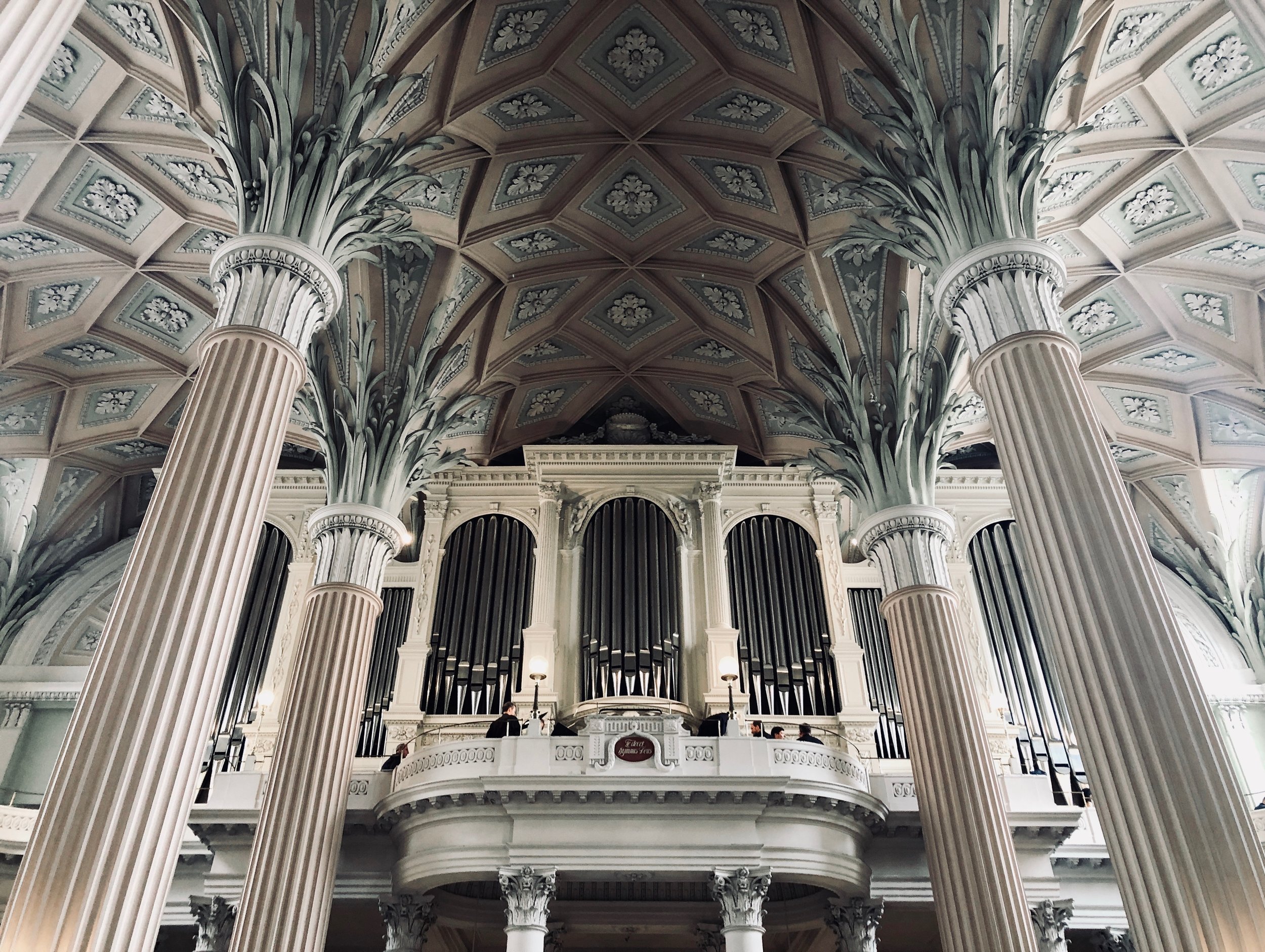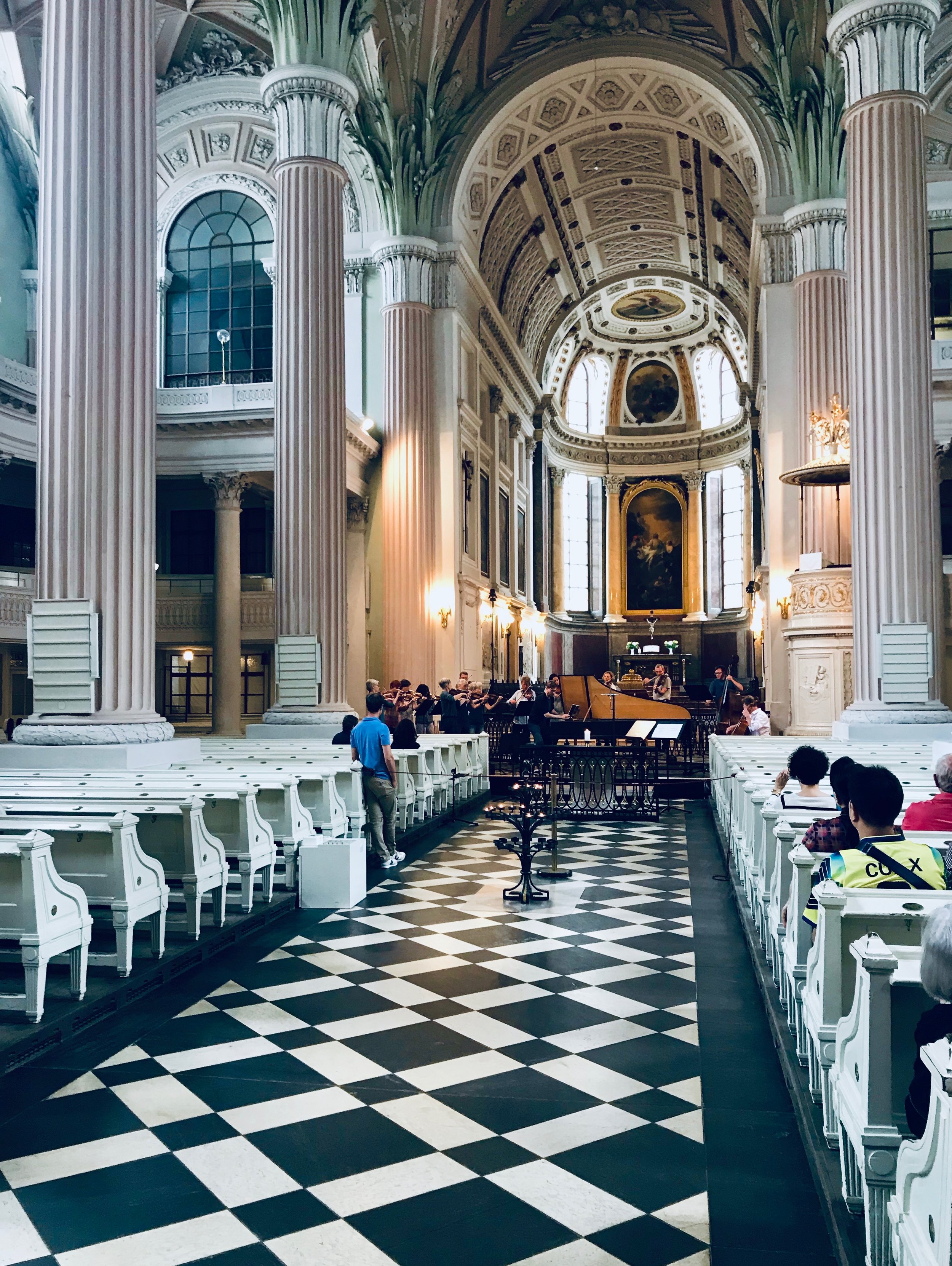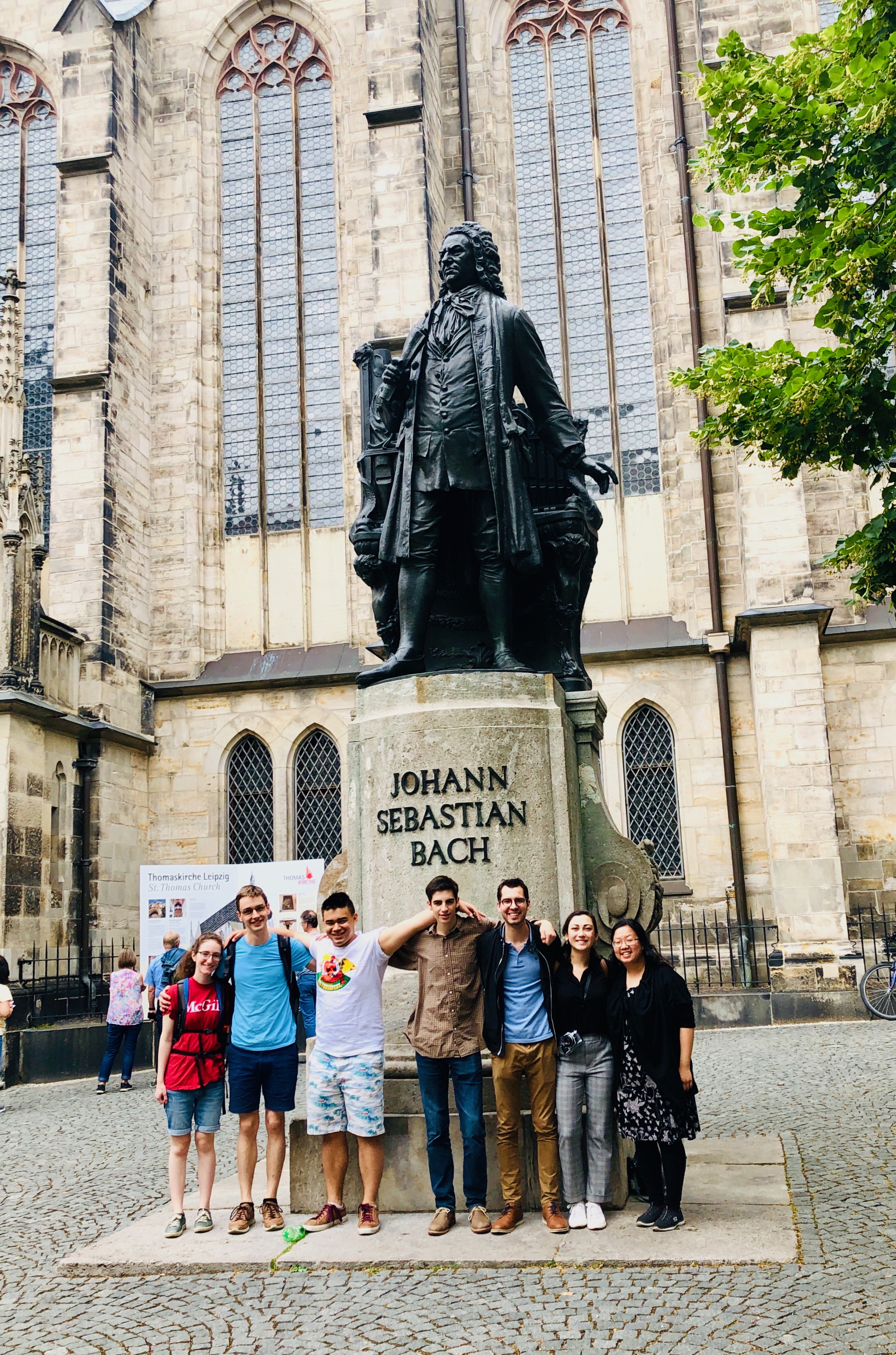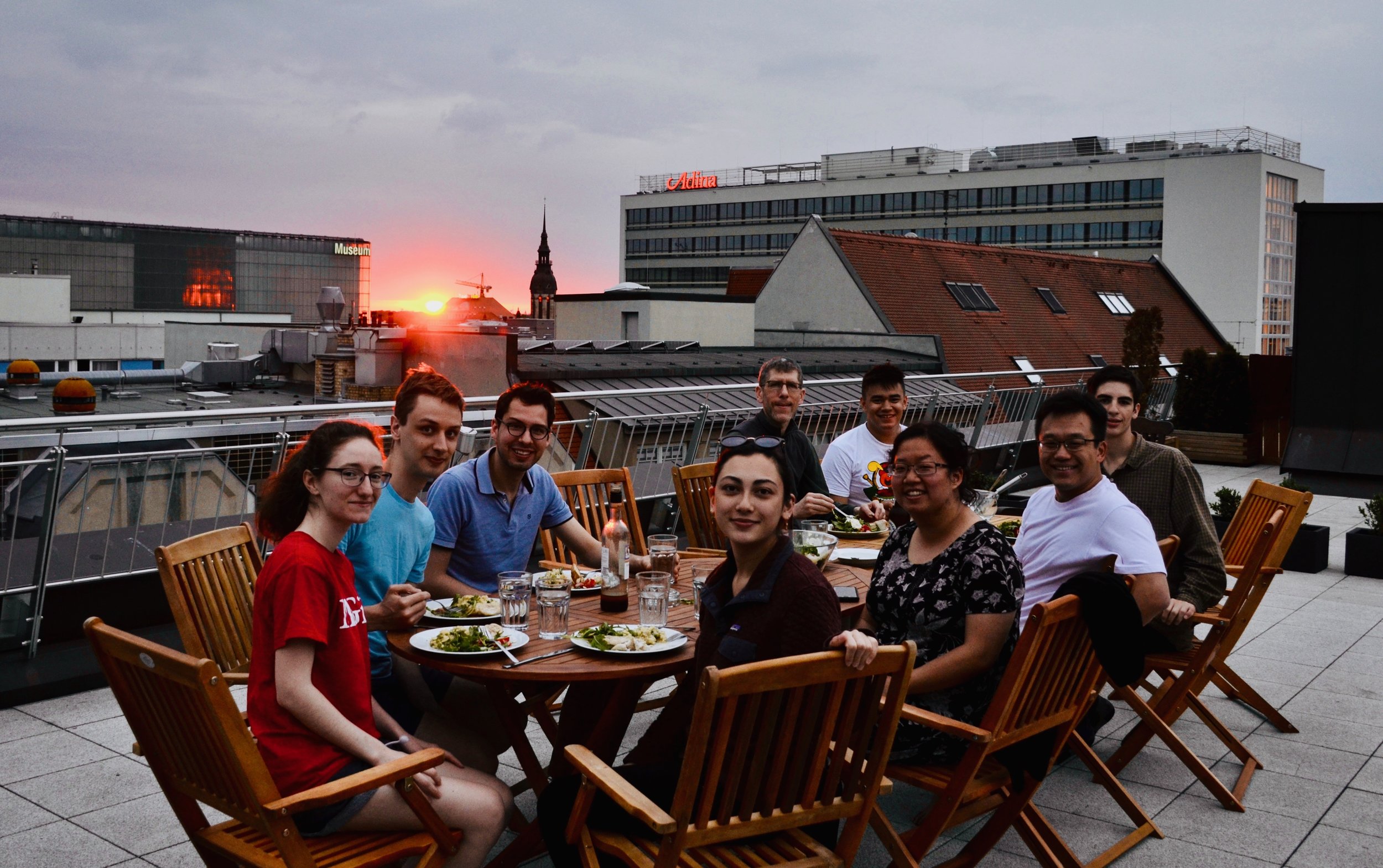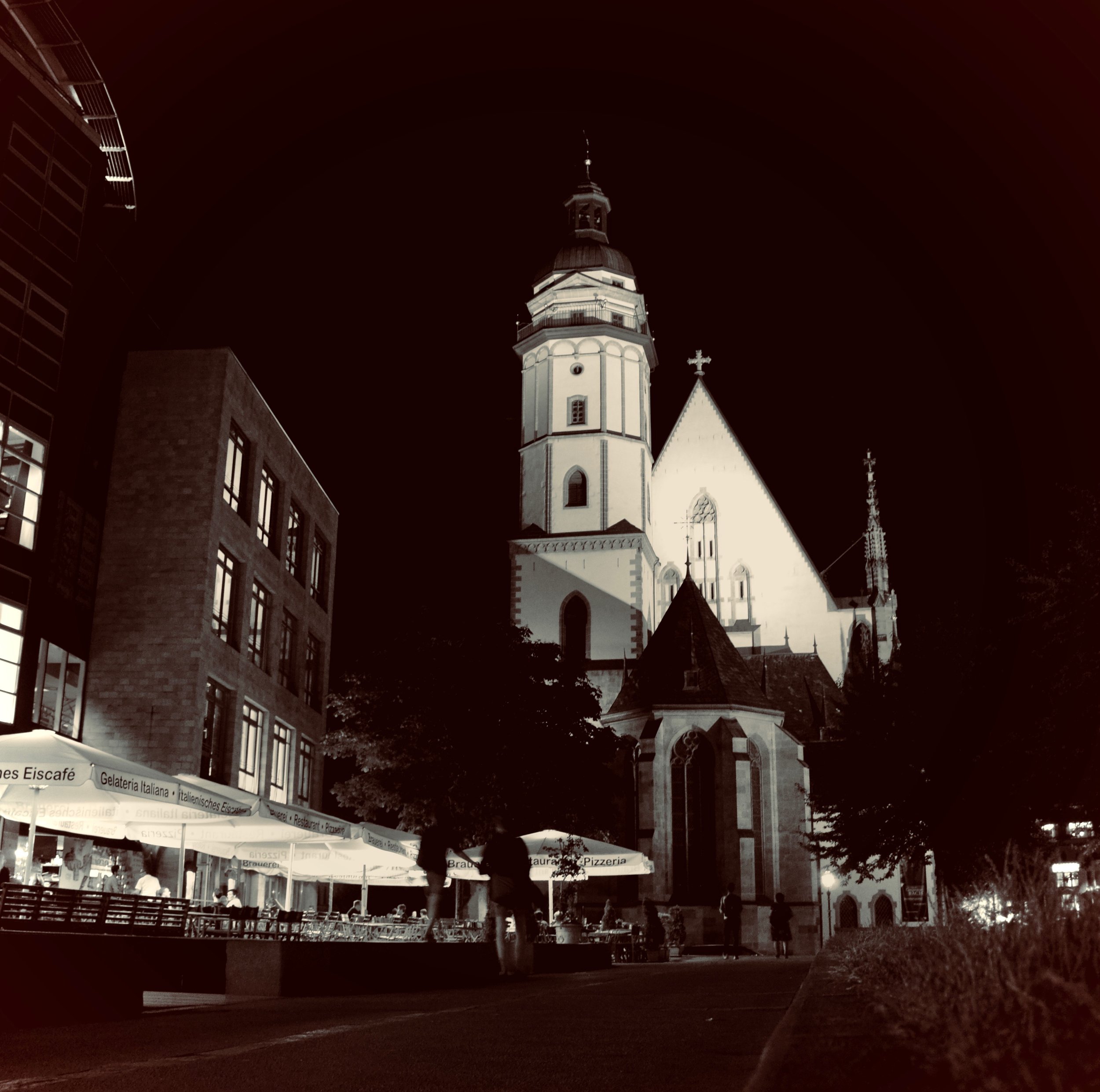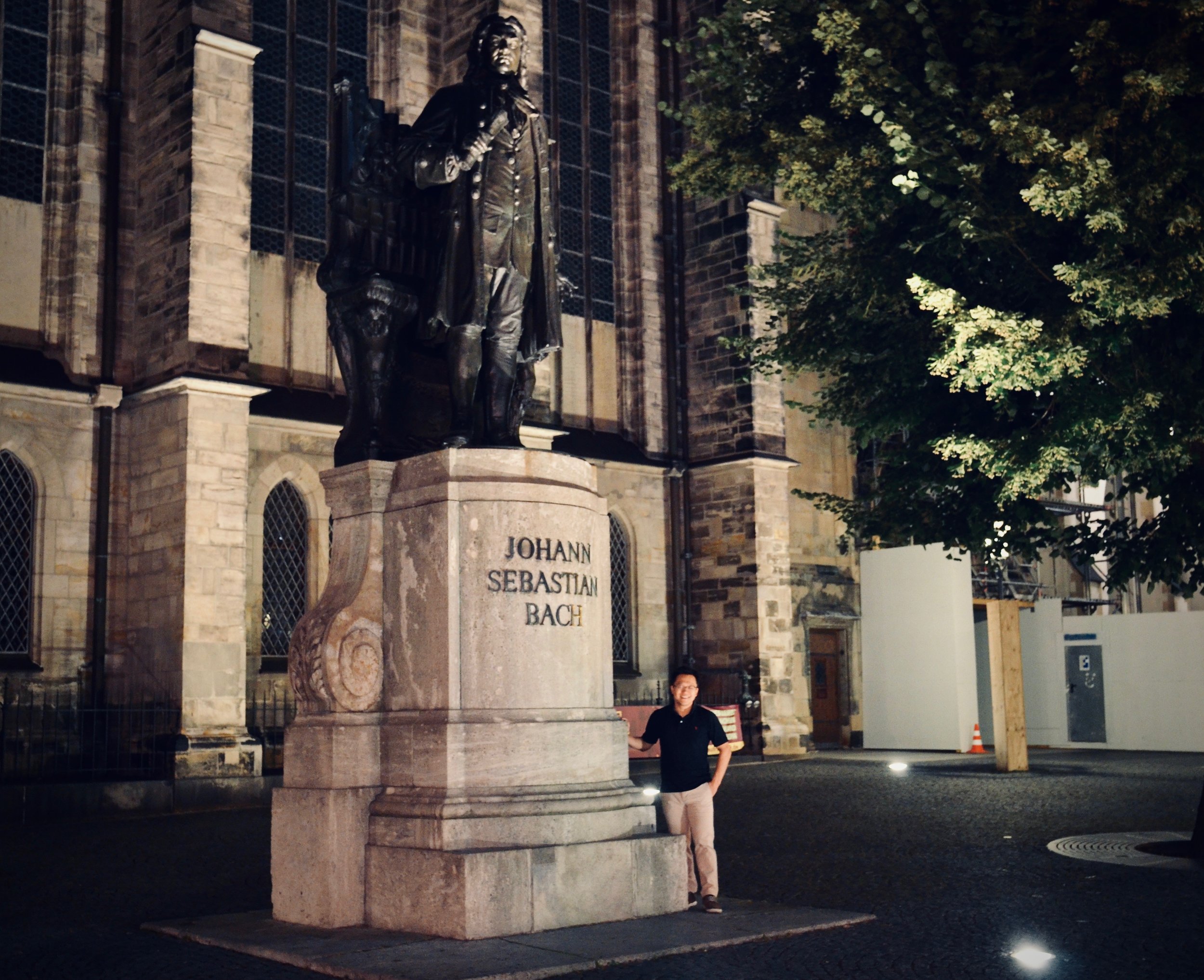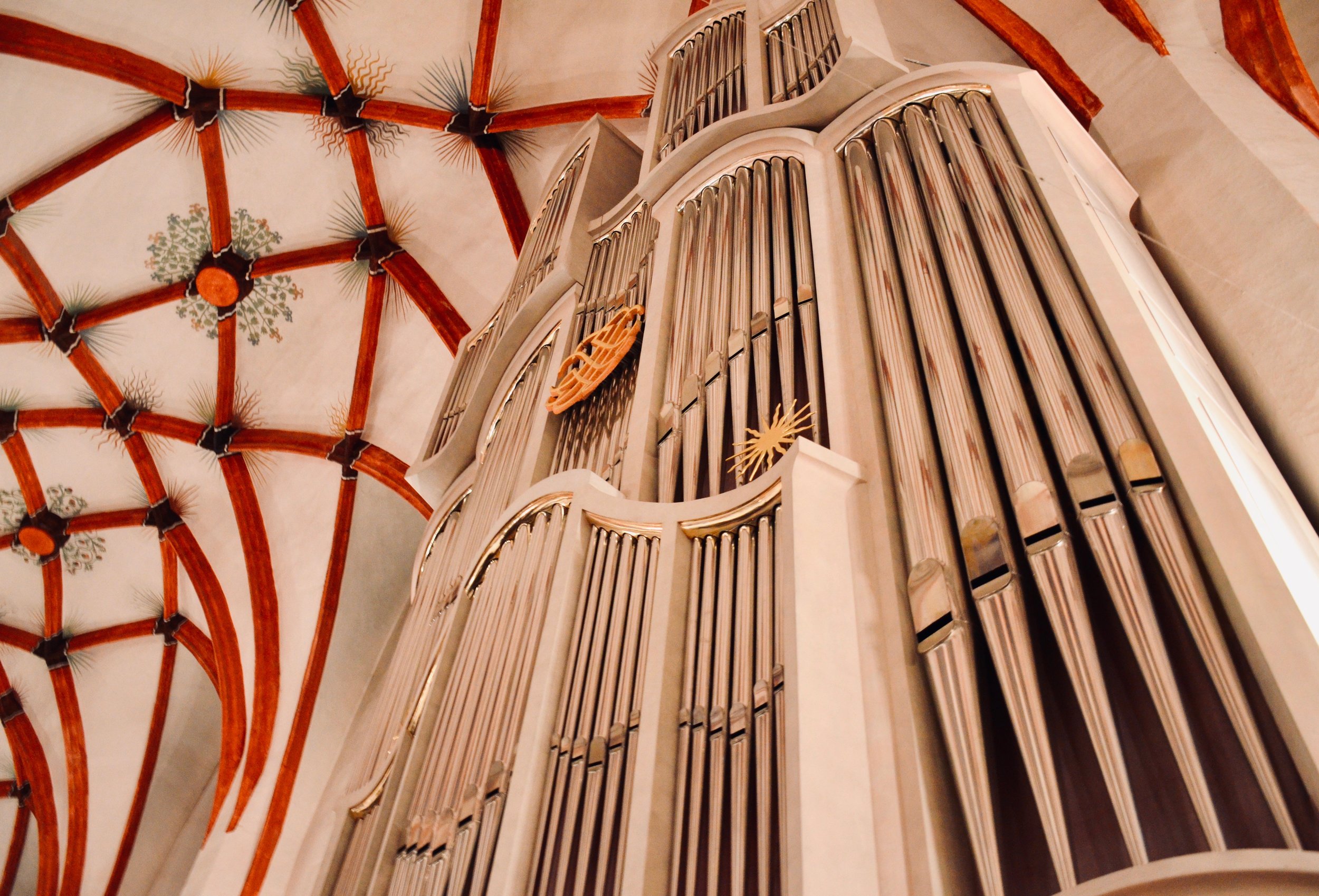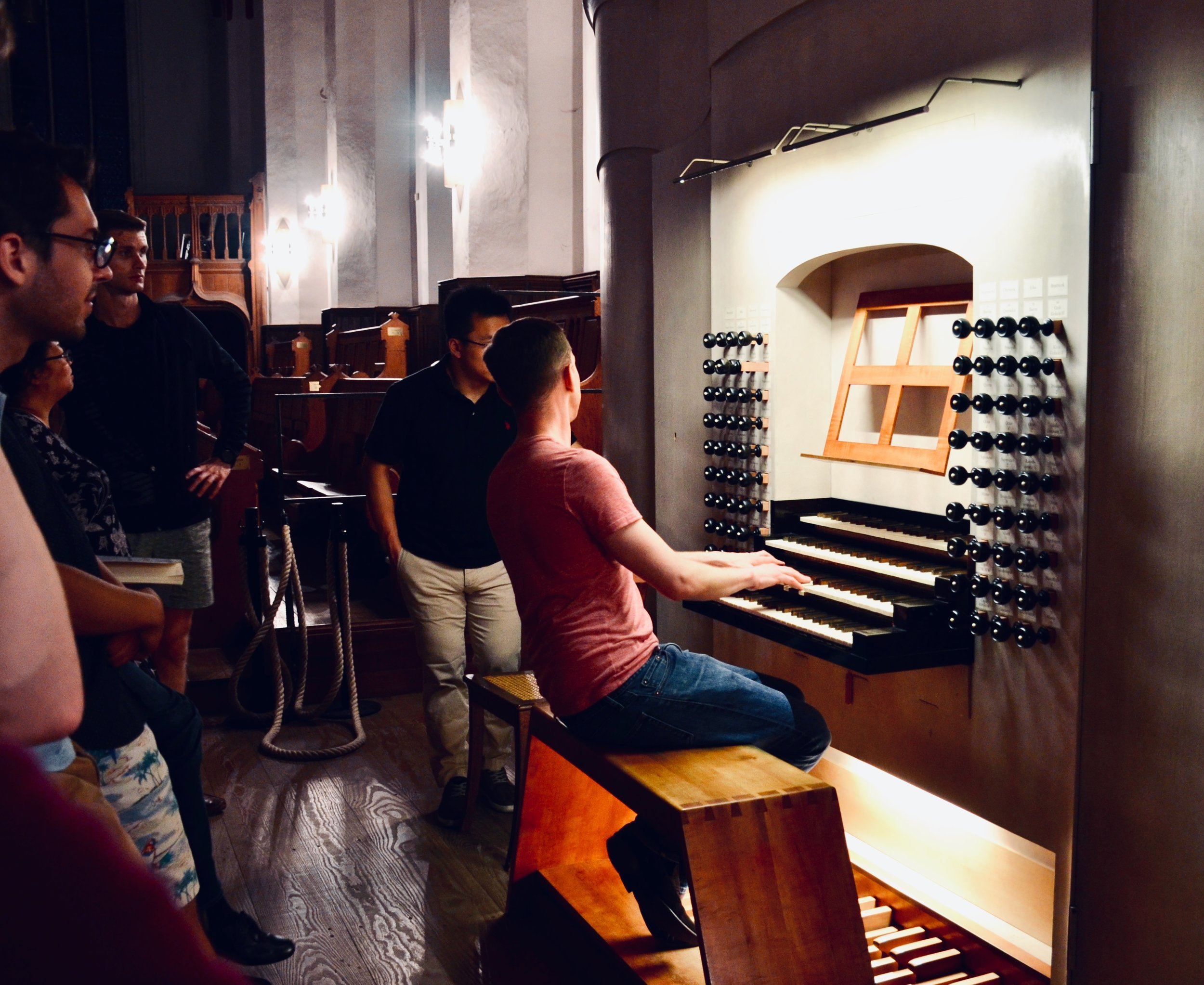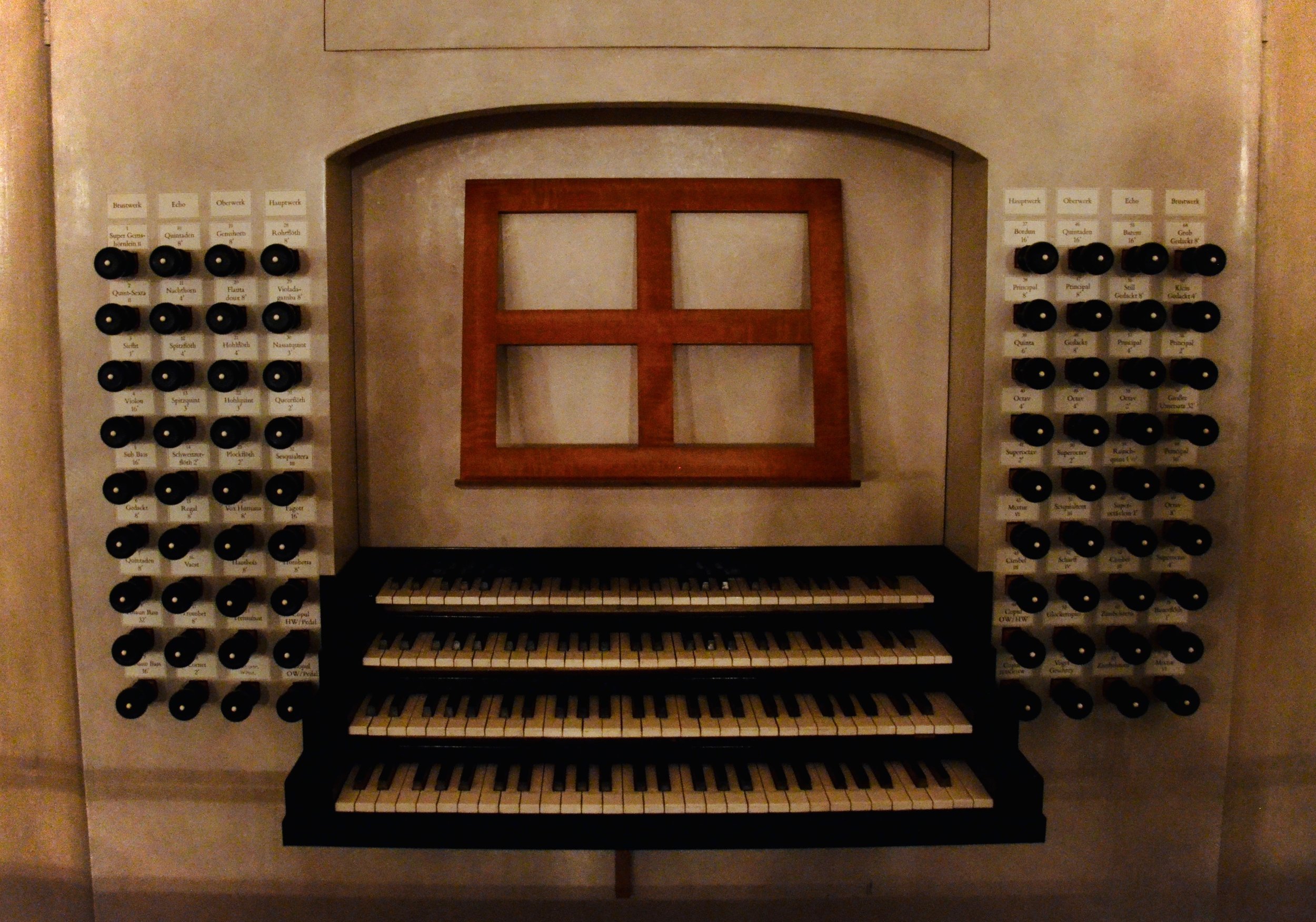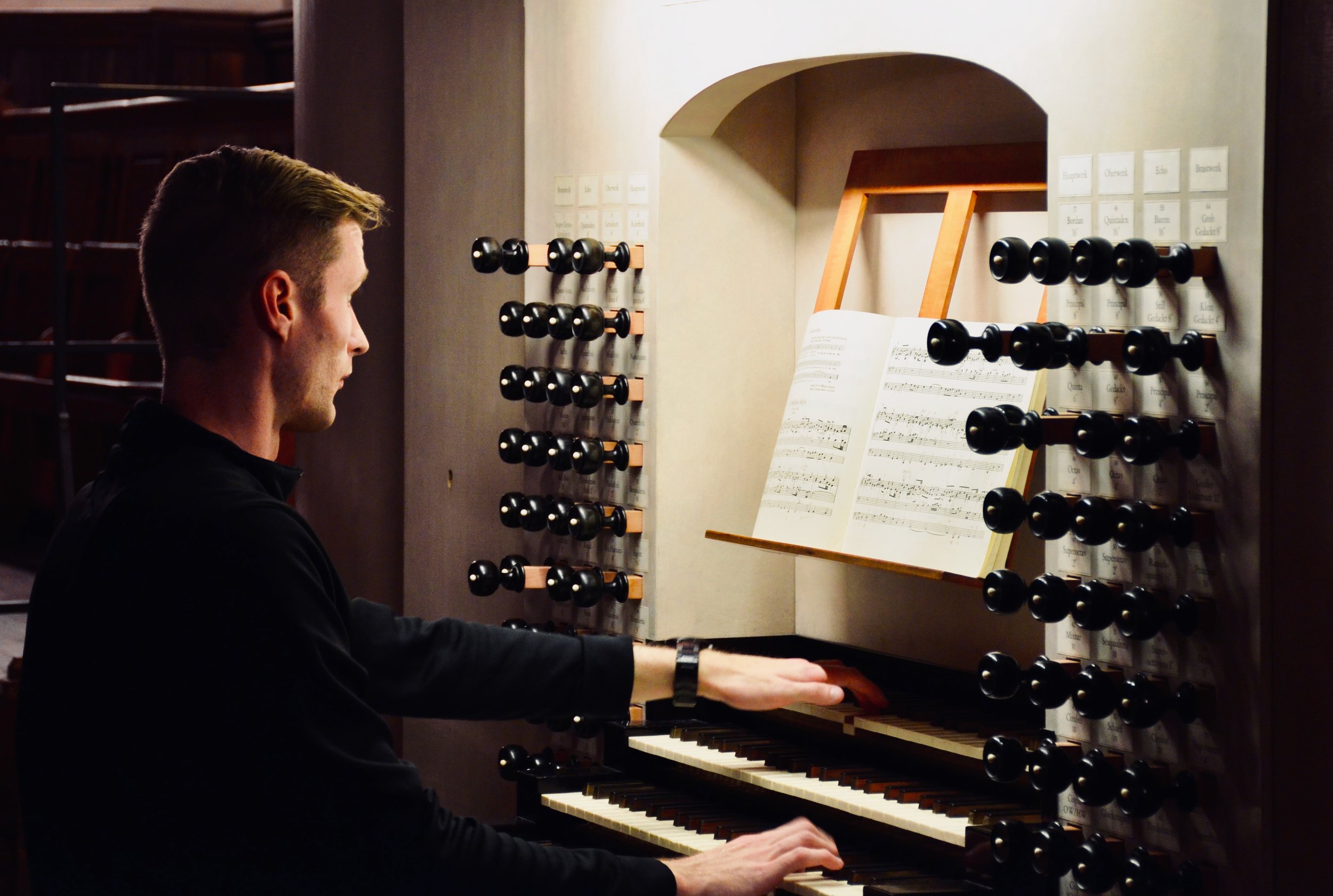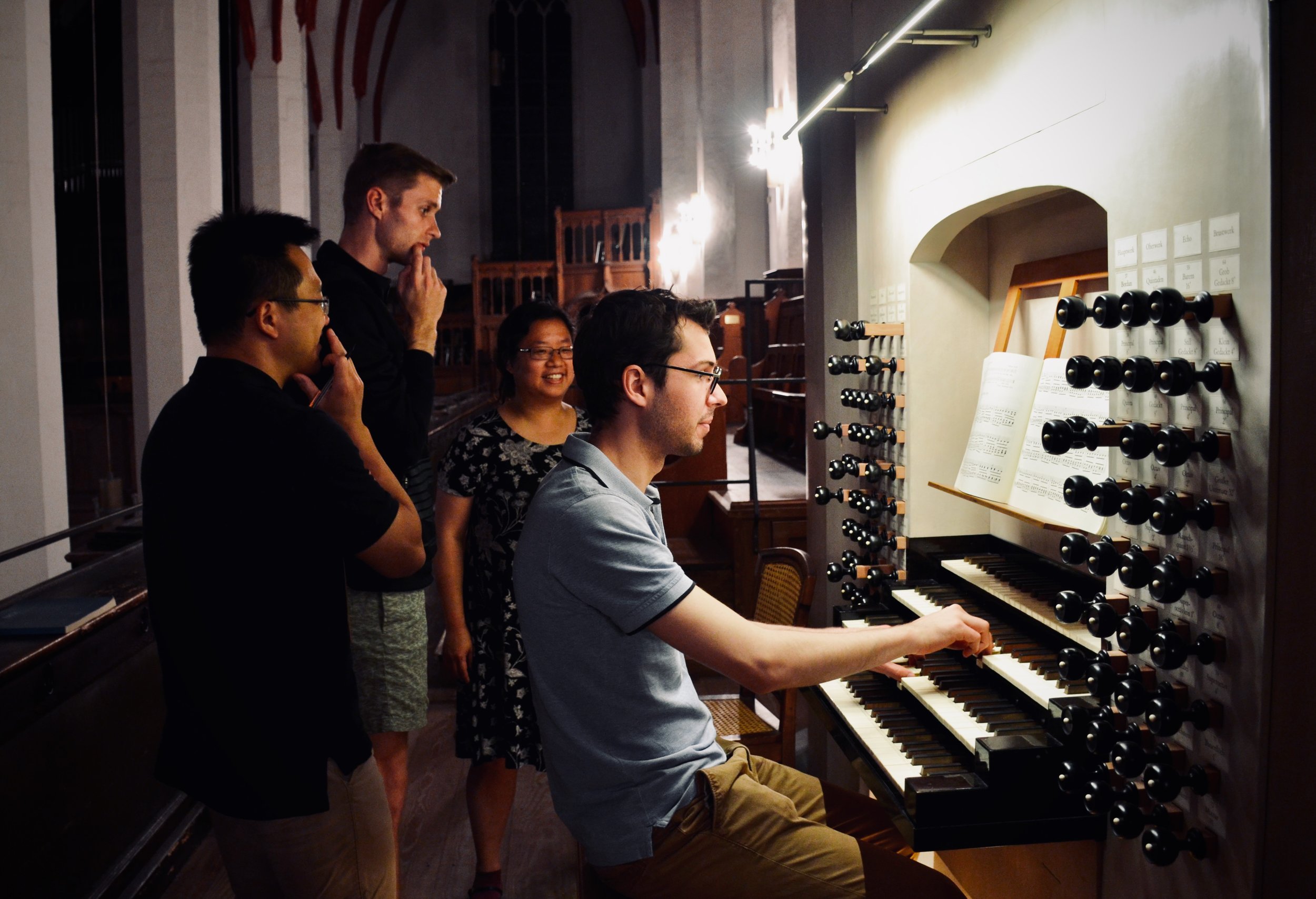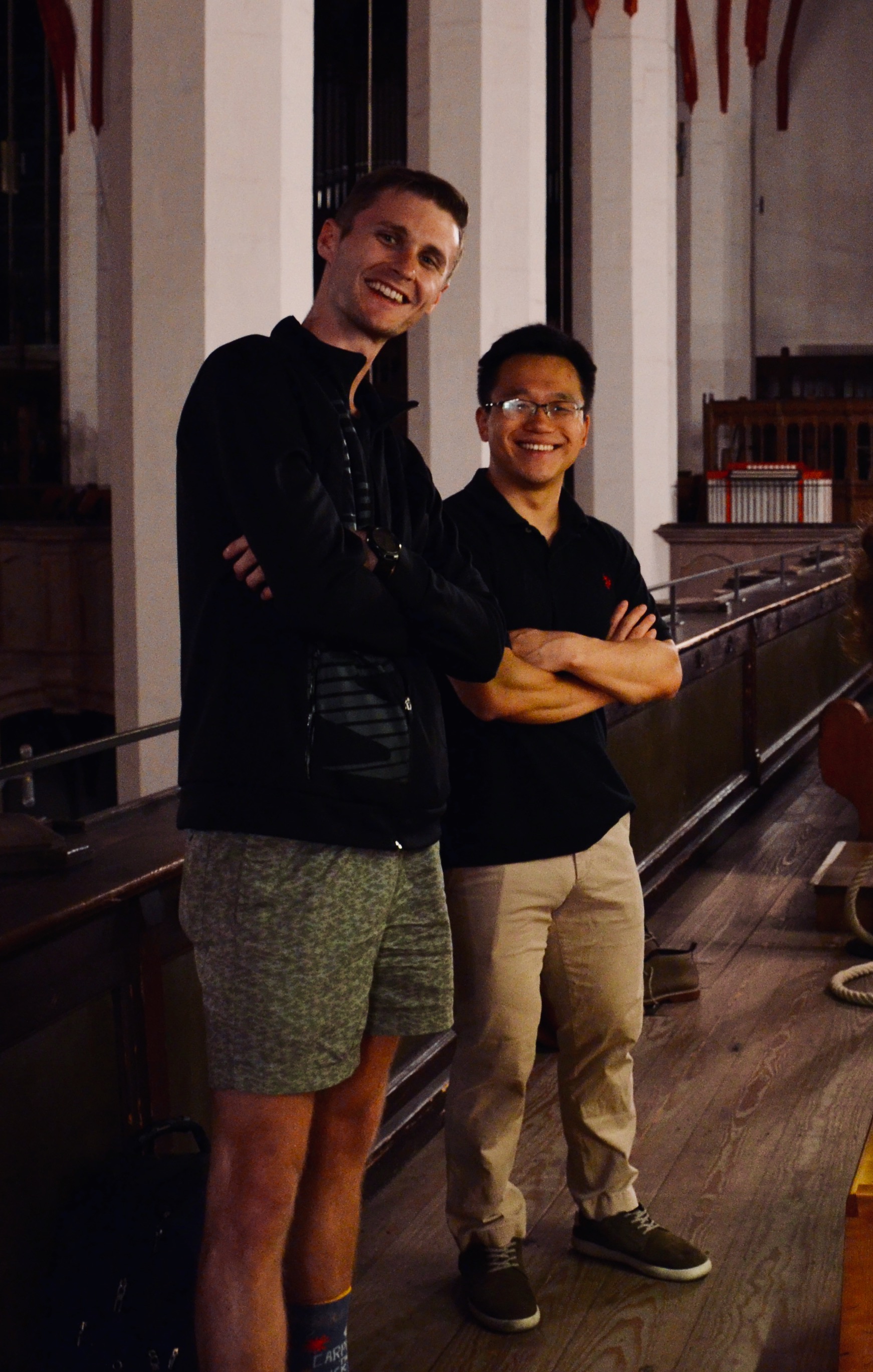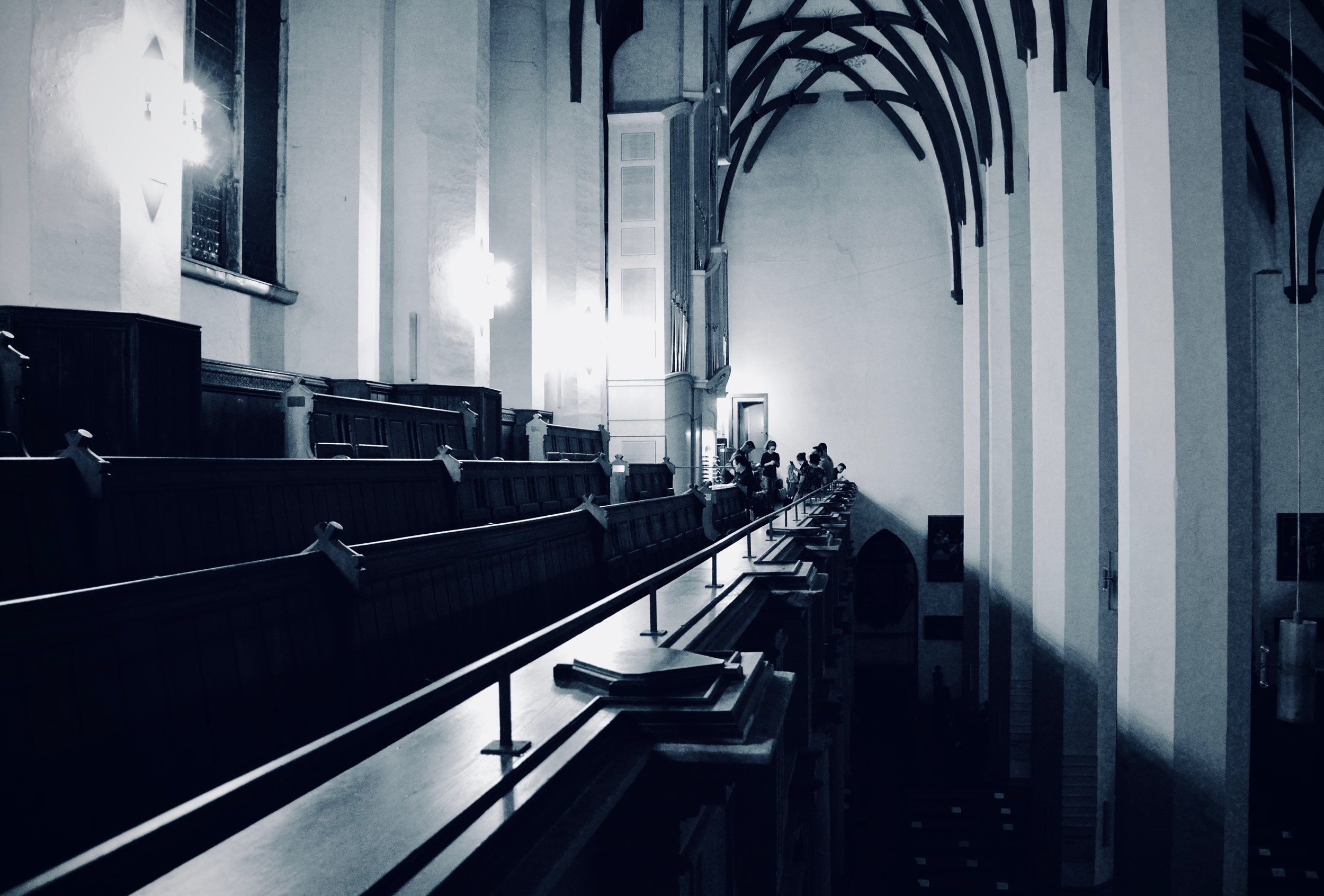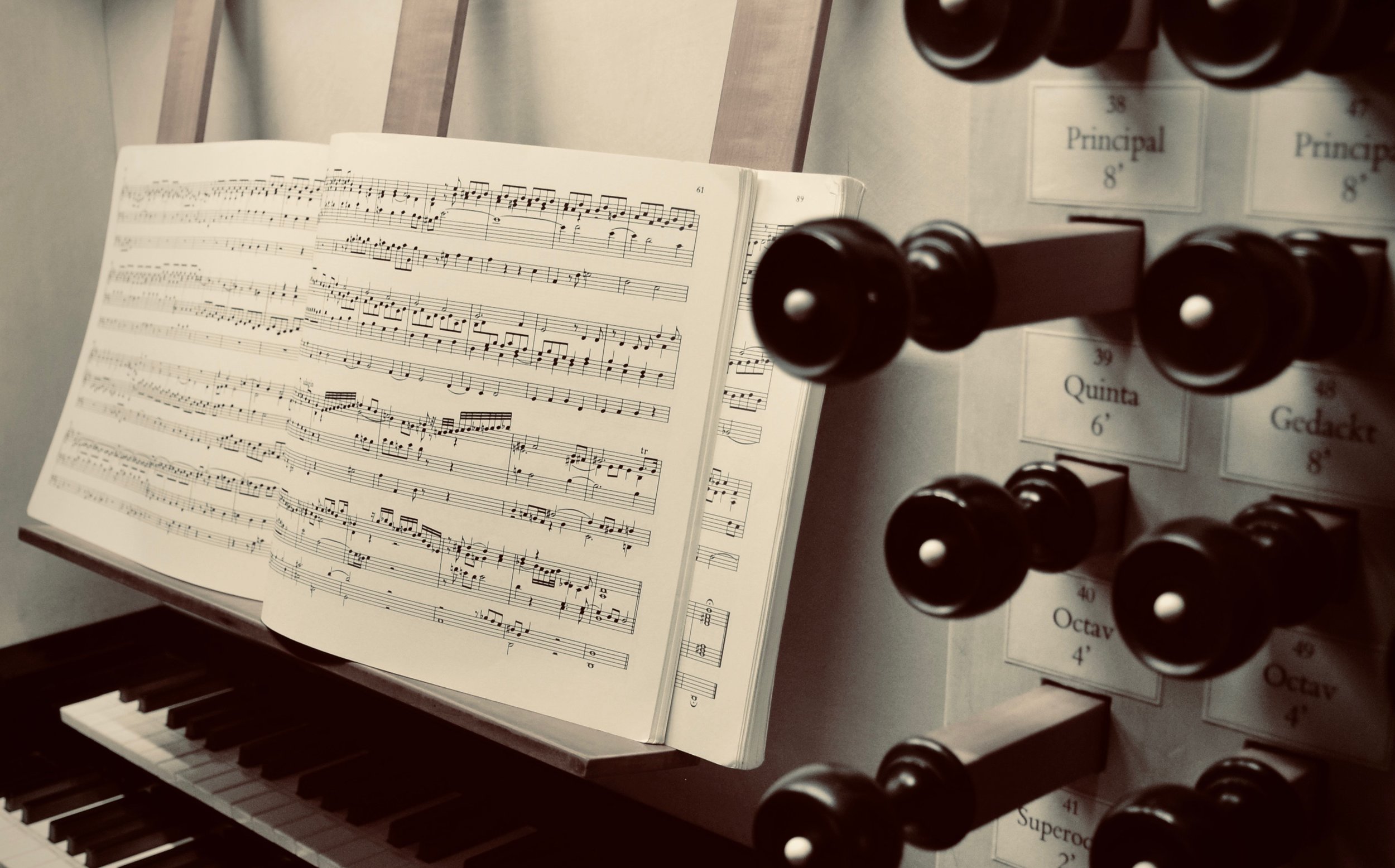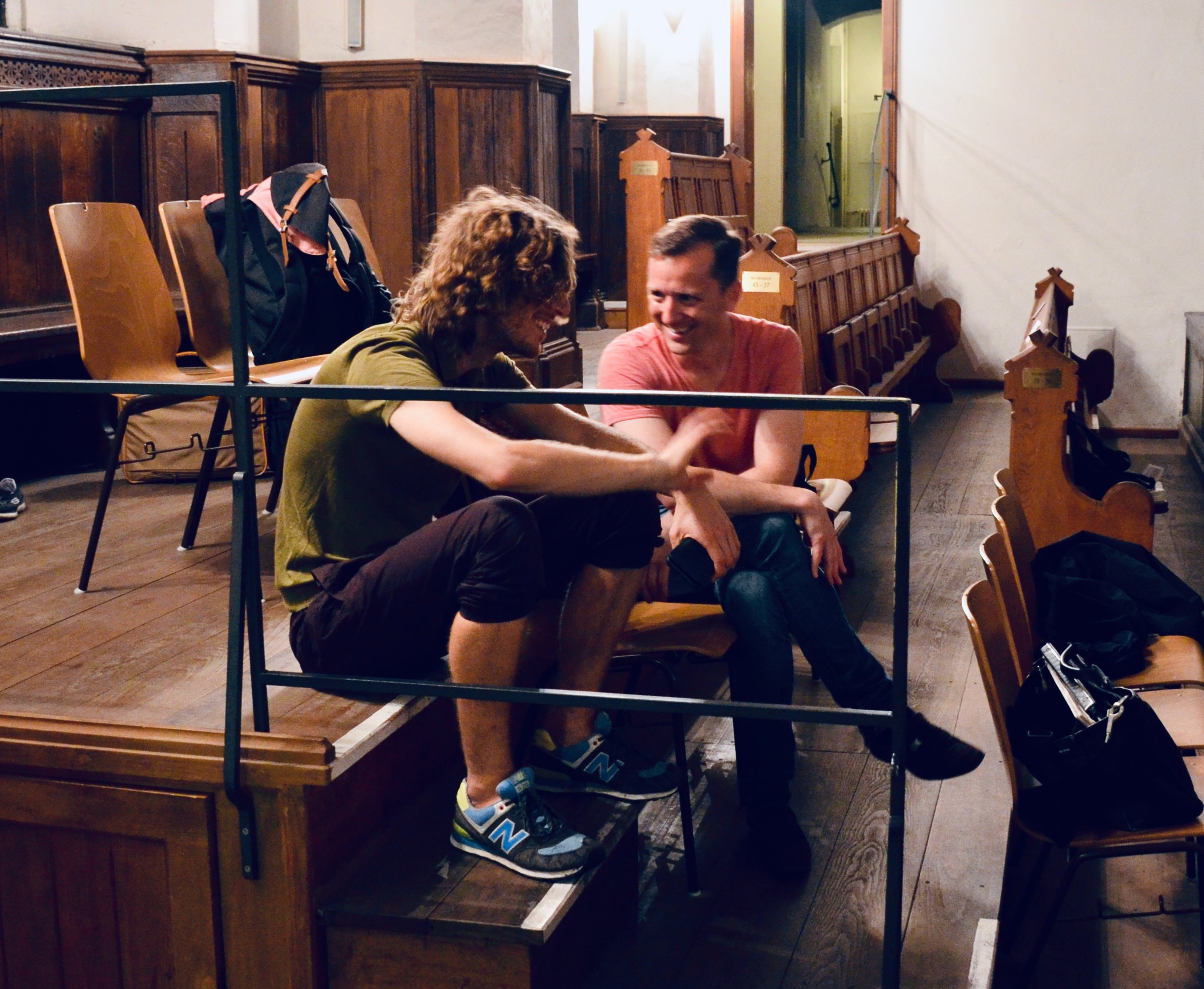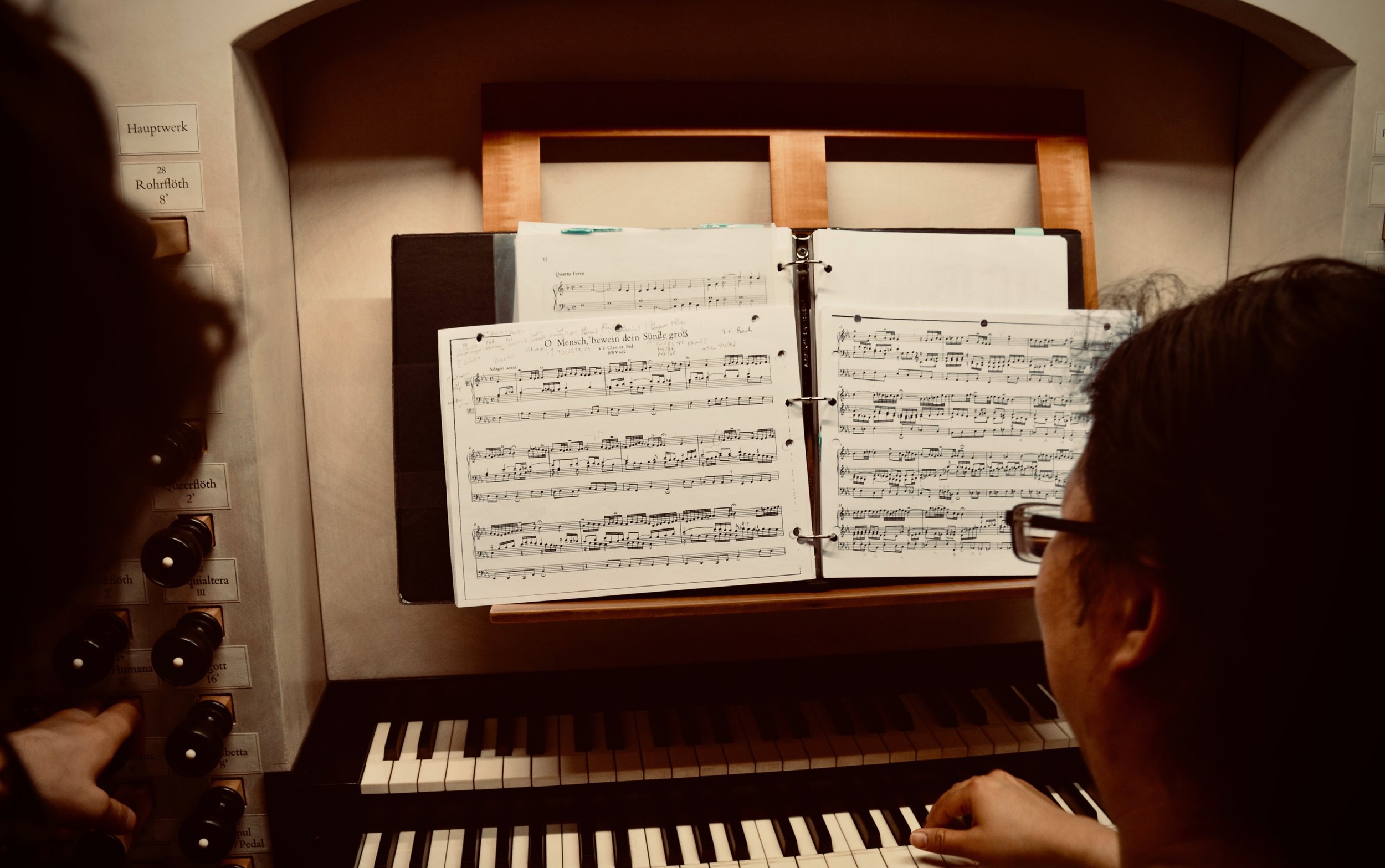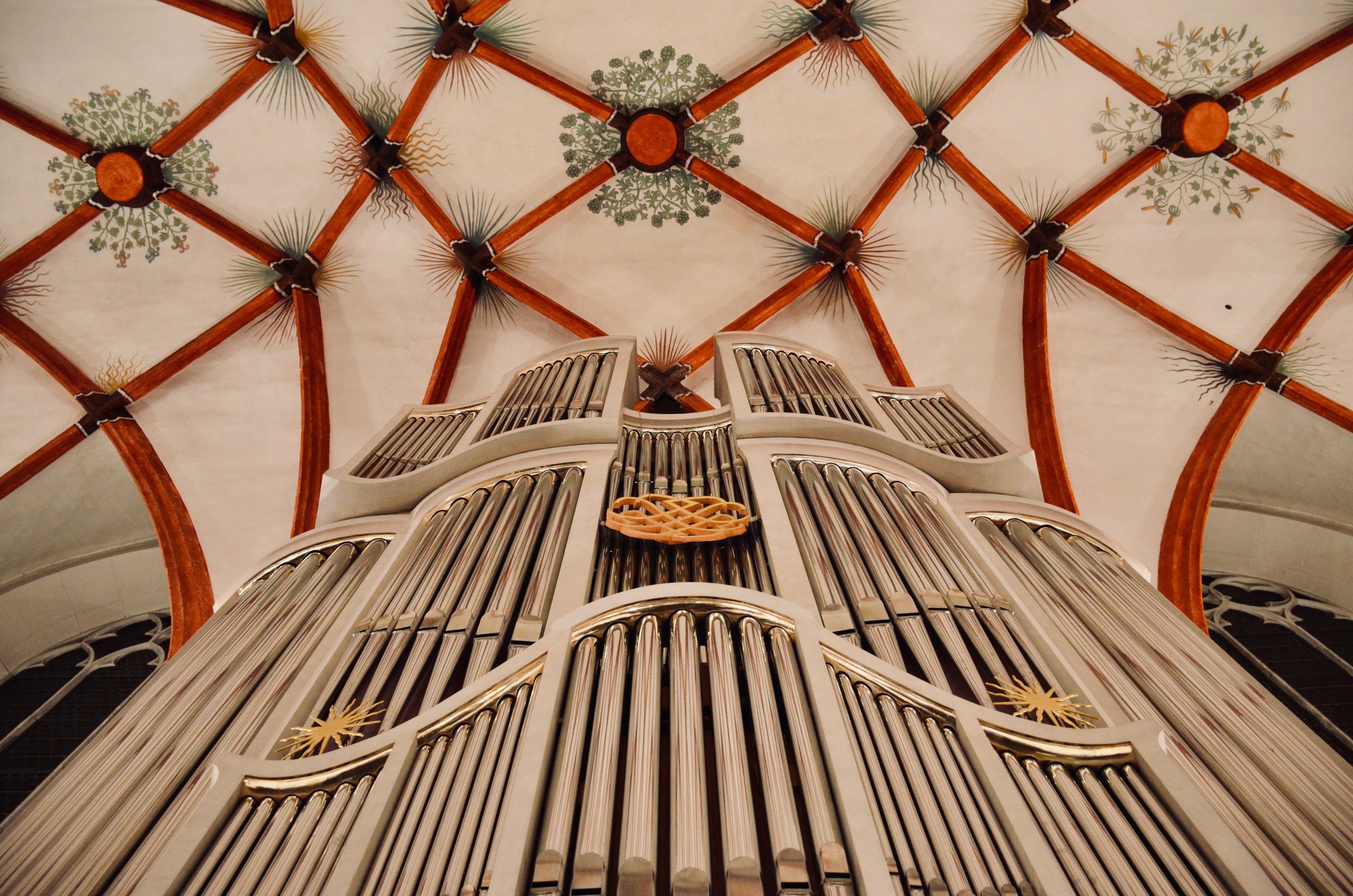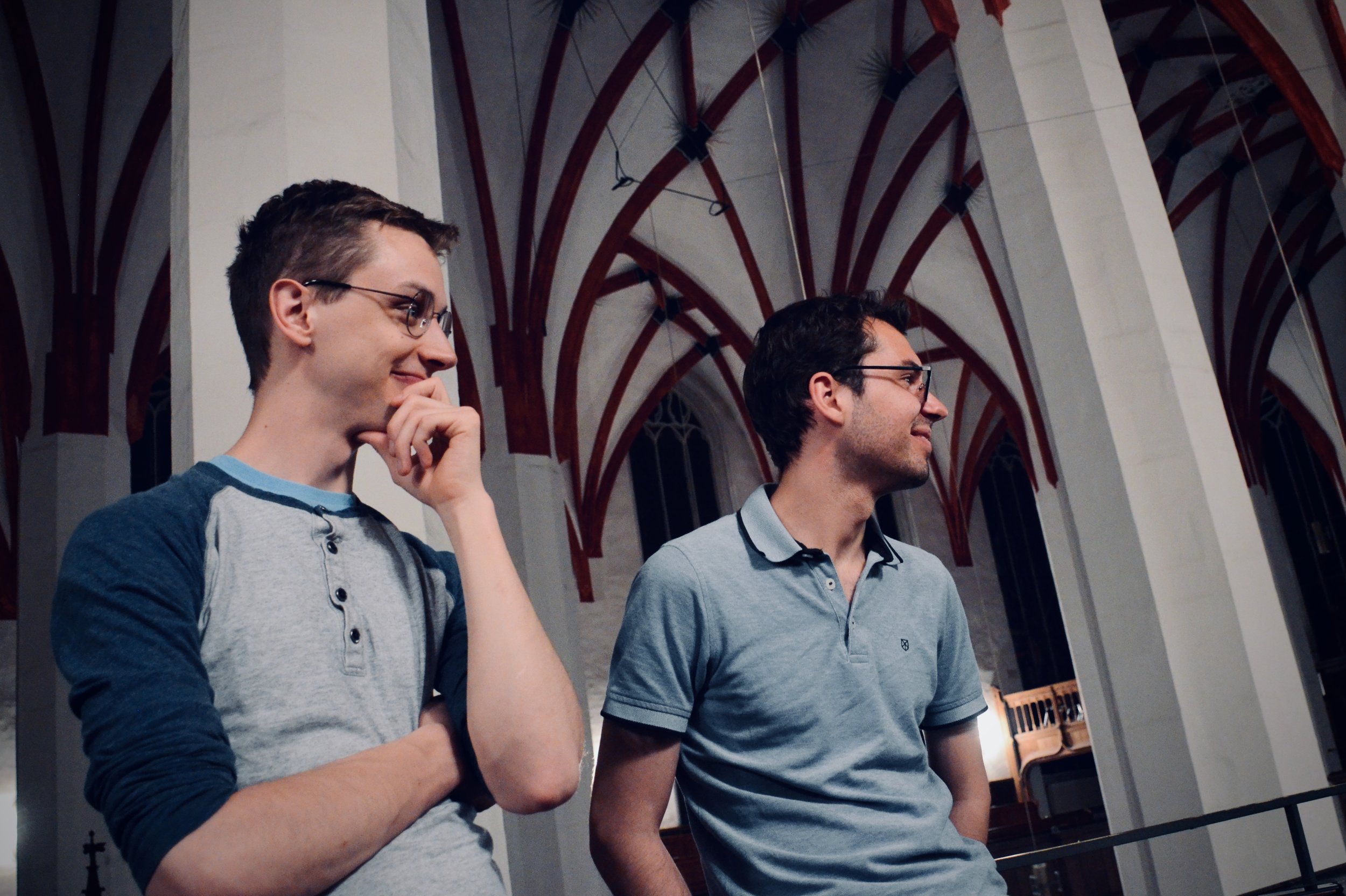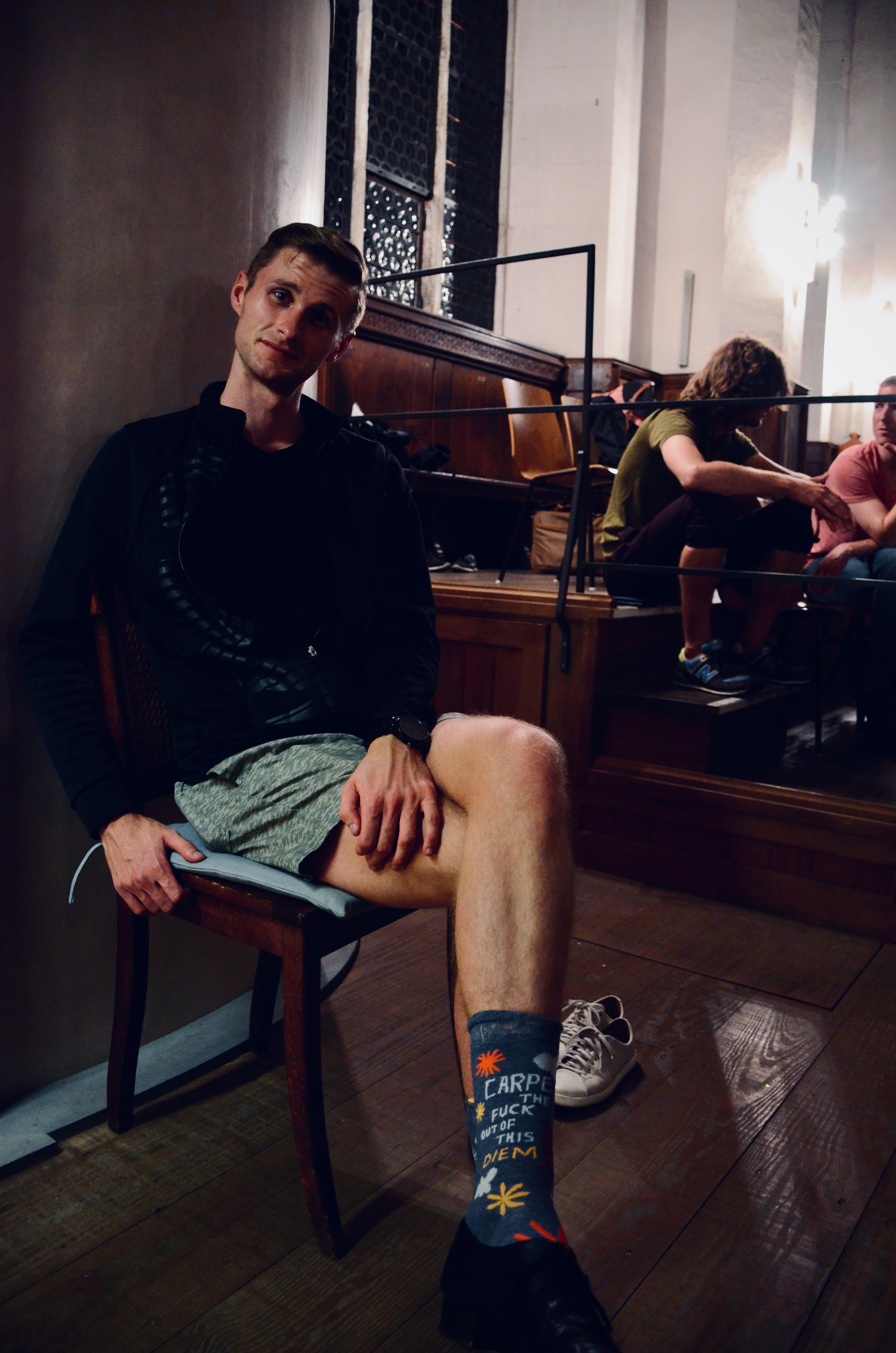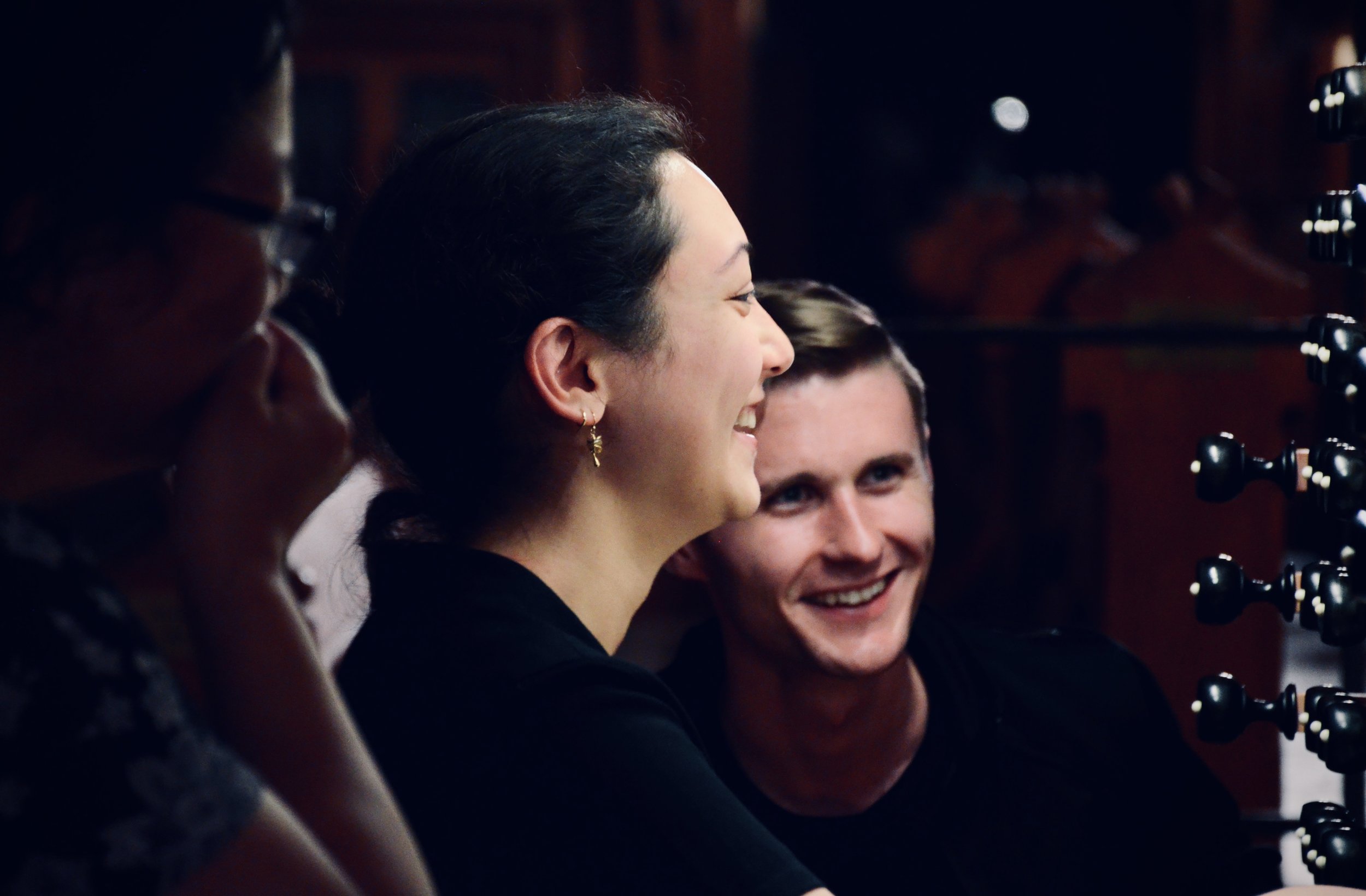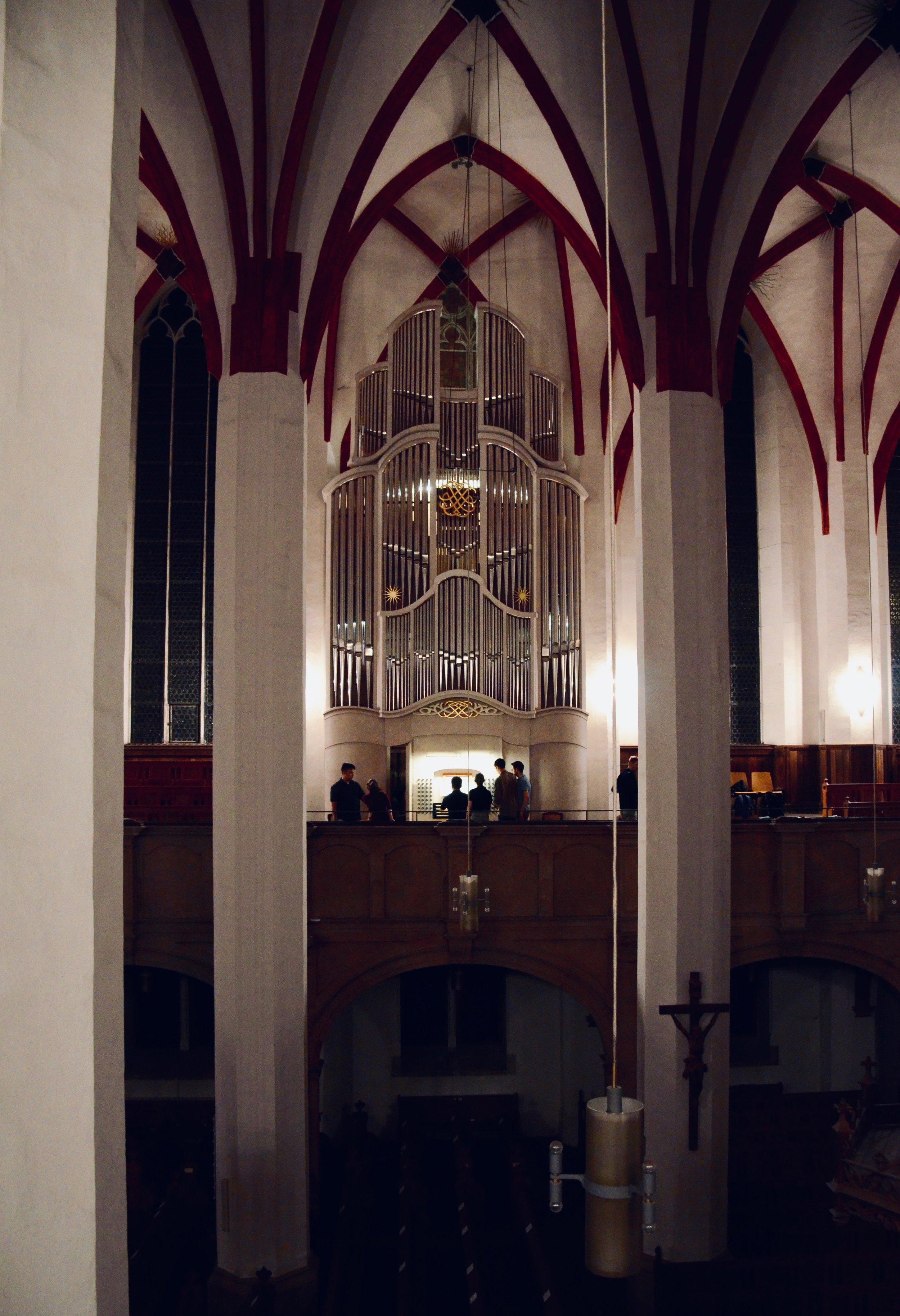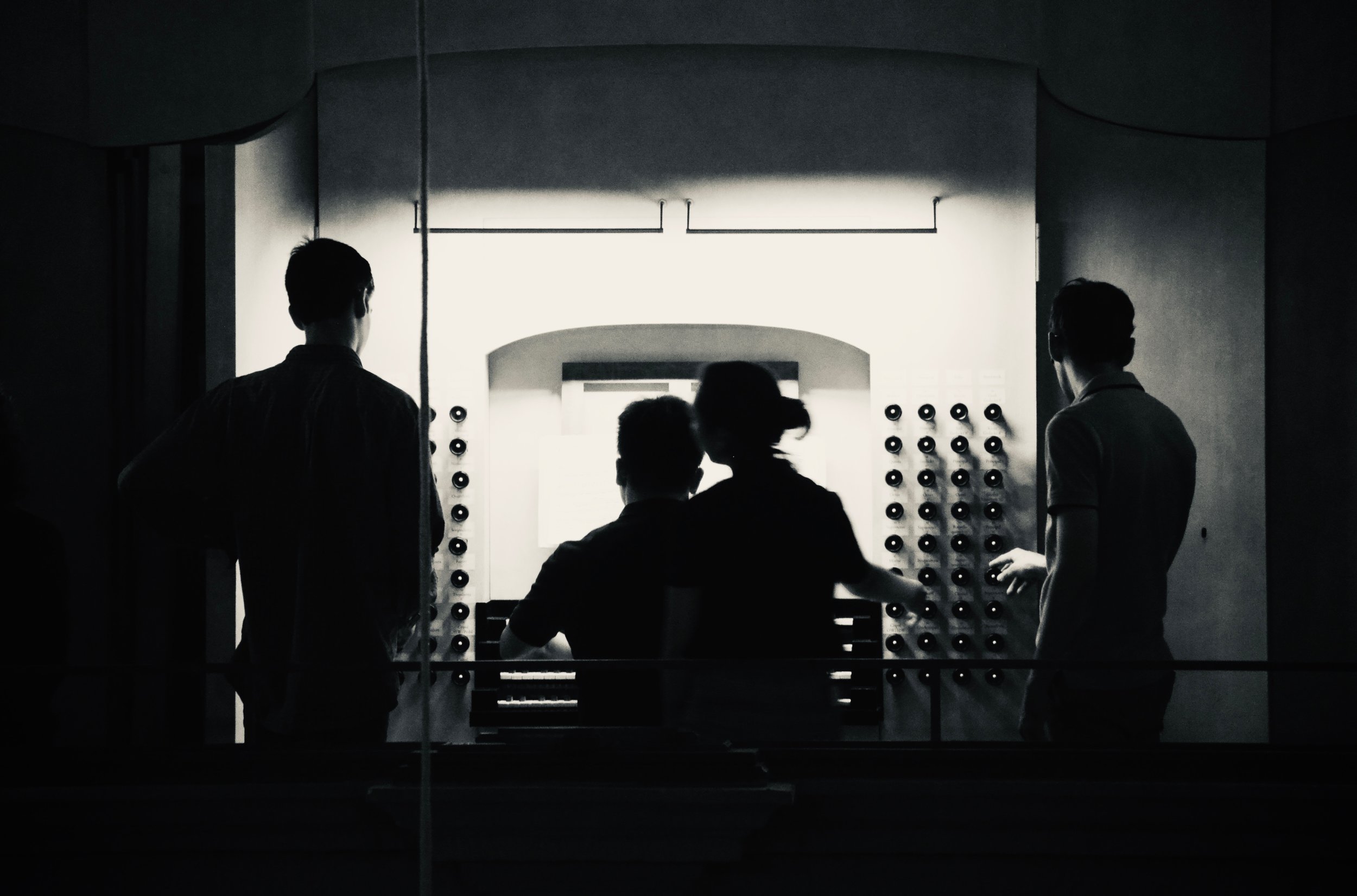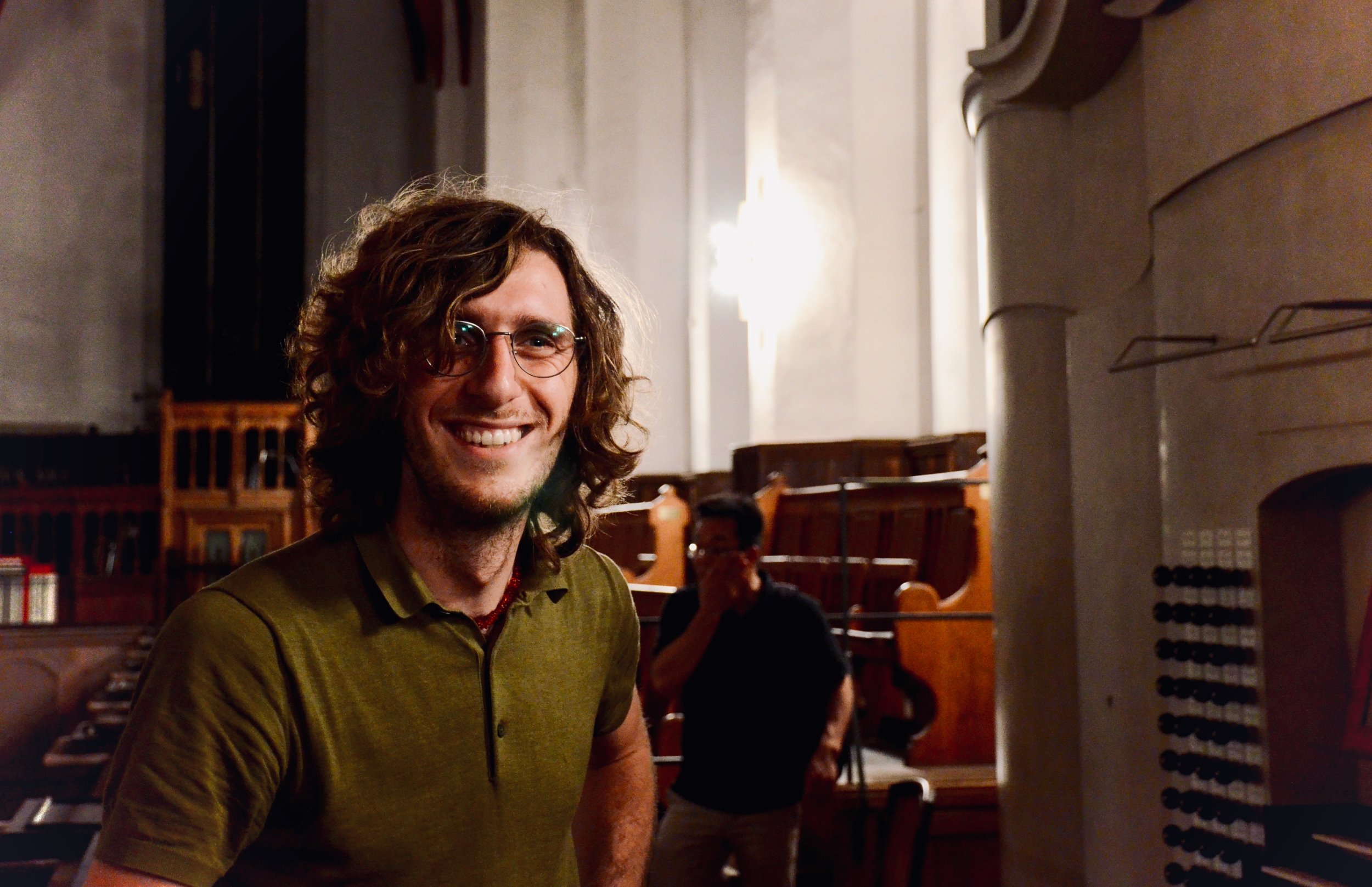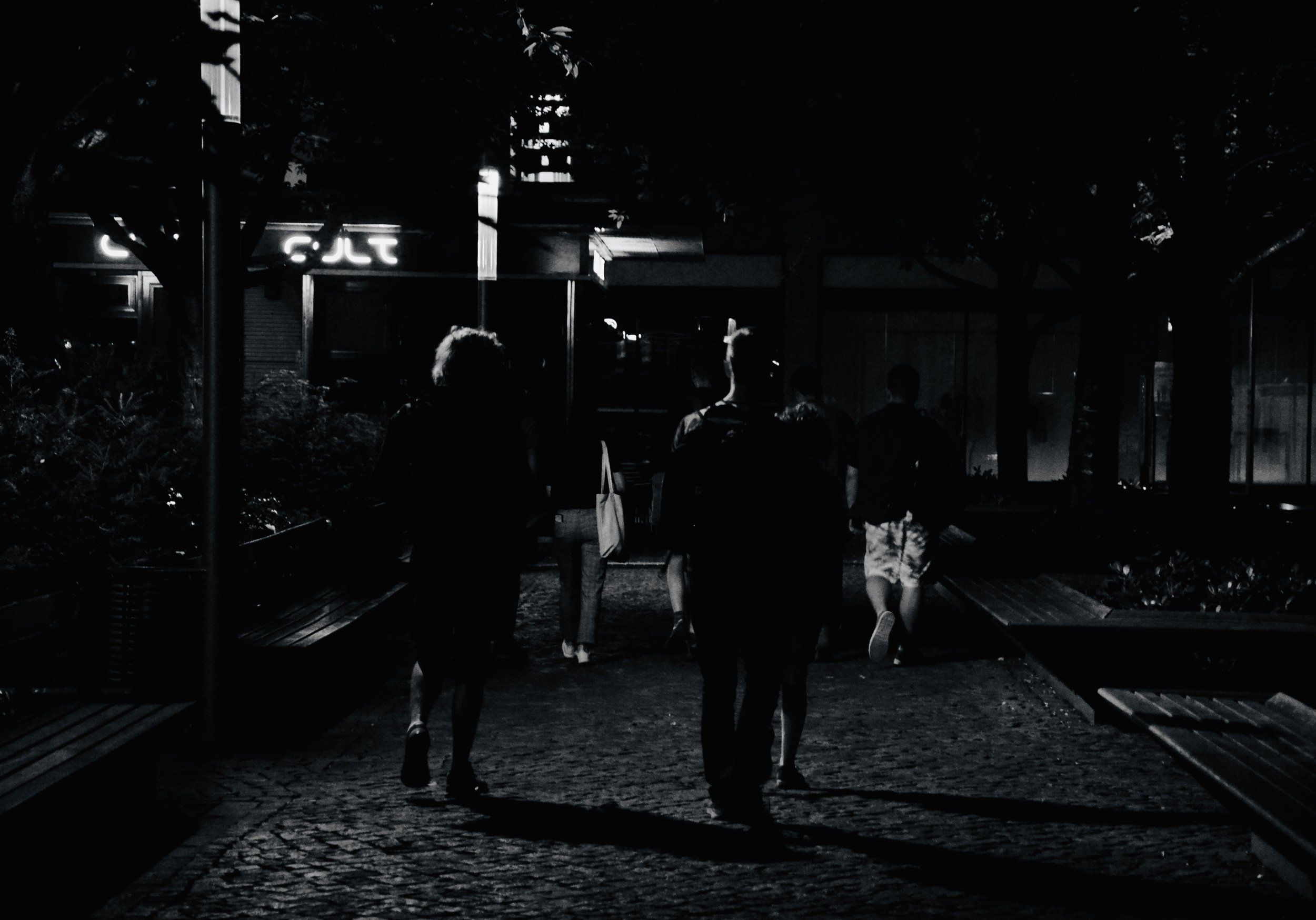Leisure and Lerchen in Leipzig
by Nicholas Capozzoli
Last week was our taste of the north German countryside. Endless pastures, fresh air, and lots of spargel (asparagus) made for a relaxing stay at our seaside villa. This week, we are based out of Leipzig, one of Germany’s most populated and bustling cities. We already sense a complete change of pace from country life; people, sights, and sounds are everywhere! Today was our freier Tag (“free day”), and it was a good chance to explore this city.
Welcome to Leipzig!
Some people used the morning to catch up on much-needed sleep. Evan decided to take an early train and explore more of Hamburg. He took a ferry down the Elbe River and spent some time on the beach. Chris Porter explored neighborhoods to the south and east of central Leipzig. He stumbled upon the Gutenbergschule, a vocational school for book publishing, media, and art. Throughout his walk, he was particularly struck by Leipzig’s mix of old and new; much of this city is a conglomeration of traditional and modern architecture.
Sunday Service in the Nikolaikirche, Leipzig.
Meg and I attended the 10 AM Gottesdienst (main Sunday service) at the Nikolaikirche, a convenient, two-minute walk from our place. The largest church in Leipzig, it was one of four parishes overseen by Johann Sebastian Bach (the others being the Thomaskirche, Neue Kirche, and Peterskirche). To say that the interior of the church is impressive would be an understatement. Walking through it, I could imagine the large galleries once packed with congregants listening to cantatas and heartily singing Lutheran chorales. Today’s service, lasting almost two hours, was quite special. Not only is it a major feast (Trinity Sunday), but it is also one of many events during Bachfest 2019. This annual festival brings performers from all over the world to play and sing Bach’s music. We were treated to a complete cantata during communion ( “Nur jedem das Seine,” BWV 163). The choir also sang an anonymous Baroque setting of “Tristis est anima mea” and a motet by Felix Mendelssohn. There were plenty of moments for us to participate as well. The large congregation, most likely bolstered by Bachfest spectators, sang the responses and hymns with much gusto. One thing that intrigued us North Americans was the choreography of the congregation; we sat for most of the service and only stood during the scripture readings.
Leipziger Lerchen, traditional Leipzig tarts with marzipan and a cherry at the bottom.
After the service, Meg and I joined the trio of Alex’s, Rosemarie, and Jennifer in a tour around the Marktplatz (town square). We stumbled upon an open rehearsal for the “Bach Stage” concert series. Hundreds of tourists enjoyed a cantata in the open air of this bustling center. We met Claudius MayWoehl, son of the organ builder Gerard Woehl who built the “Bach organ” at the Thomaskirche. Claudius is quickly following in his father’s footsteps, and we got to learn more about his life as an organ builder in Germany. He joined us for a delicious lunch outside the Thomaskirche. Several of us had the “Bachtrout,” while others enjoyed a hearty Sauerbraten (pot roast). Alex Ross and Rosemarie tried Leipziger Lerchen, traditional Leipzig tarts with marzipan and a cherry at the bottom. Locals say that the cherry symbolizes the heart of a Lerche (lark), birds which were meat for pies in the 18th and 19th centuries.
Outside of the Thomaskirche in Leipzig.
After visiting the Thomaskirche and its famous Bach statue, our group took a tour of the Bach-Museum. Connected with the Bach Archives, this museum displays fascinating scores and documents relating to Bach’s life. We examined autograph manuscripts, contemporary bibles, church contracts, concert reviews, and instruments with which Bach was familiar. As self-professed organ nerds, we were particularly impressed to see the organ from the Johanniskirche in Leipzig. Bach inspected and played this instrument now housed in the museum. While the console seems recently restored, it was humbling to be within a few inches of an instrument played by the master…more of that to come this week!
Dinner on the rooftop.
Chris Lane spent the day relaxing and touring central Leipzig. He prepared an excellent risotto dinner that we enjoyed on the rooftop of our apartment building. The sunset, peaches and cream, and fun conversation made for a relaxing evening. But the night wasn’t quite over! Thanks to our new friend Claudius, we had a late-night tour of his father’s instrument in the Thomaskirche. Since the organ from Bach’s time no longer exists, Woehl constructed a hypothetical instrument based on one he played: the former organ in the nearby Universitätskirche St. Pauli. Interestingly, Woehl designed its specifications from evidence of Bach’s “wishlist,” including a Glockenspiel (chimes)! The church was only available after 11:30 PM (it’s Bachfest after all), so hopefully we catch some sleep before another busy day!
The “Bach Organ” in Thomaskirche, Leipzig, built by Woehl in 2000.

